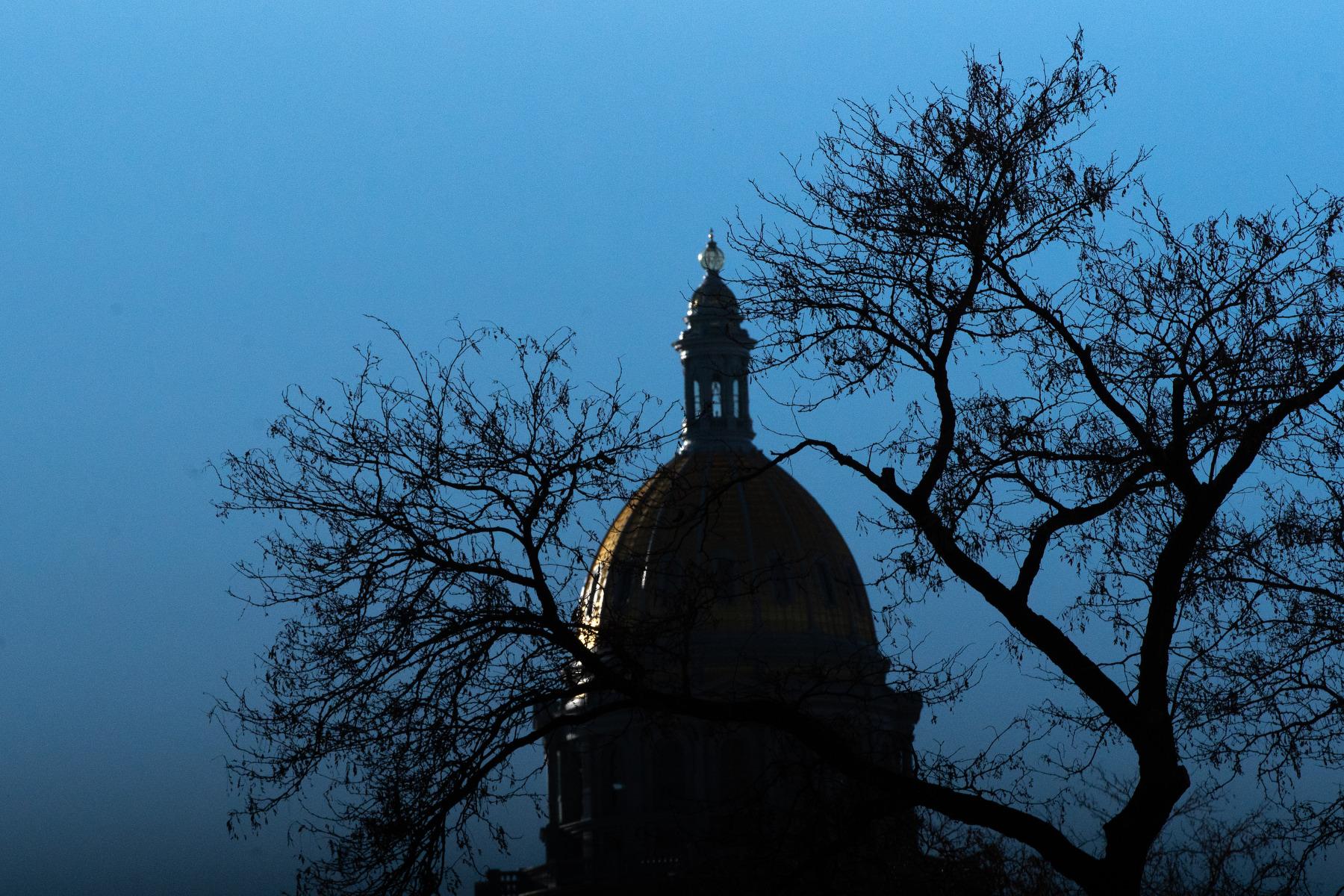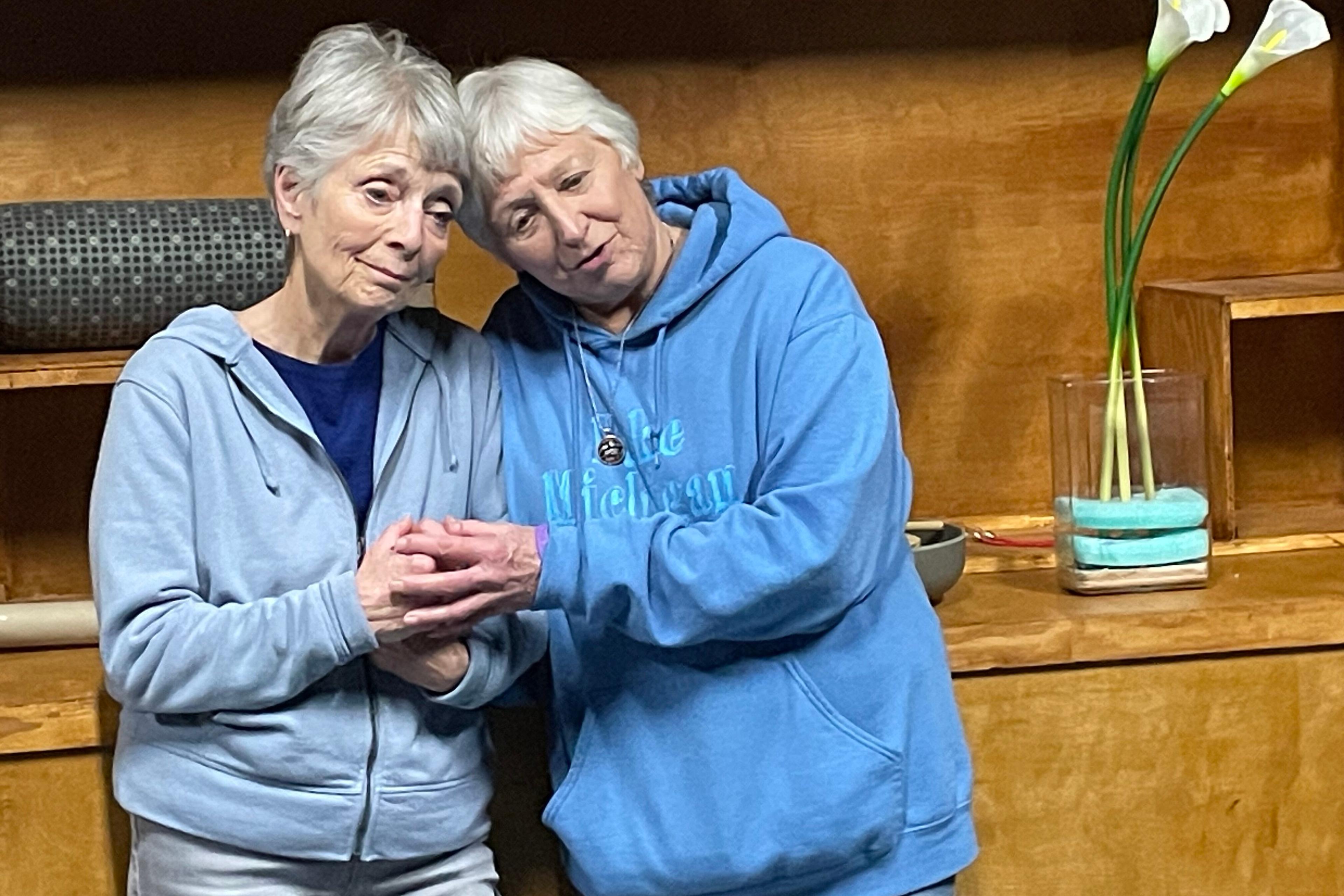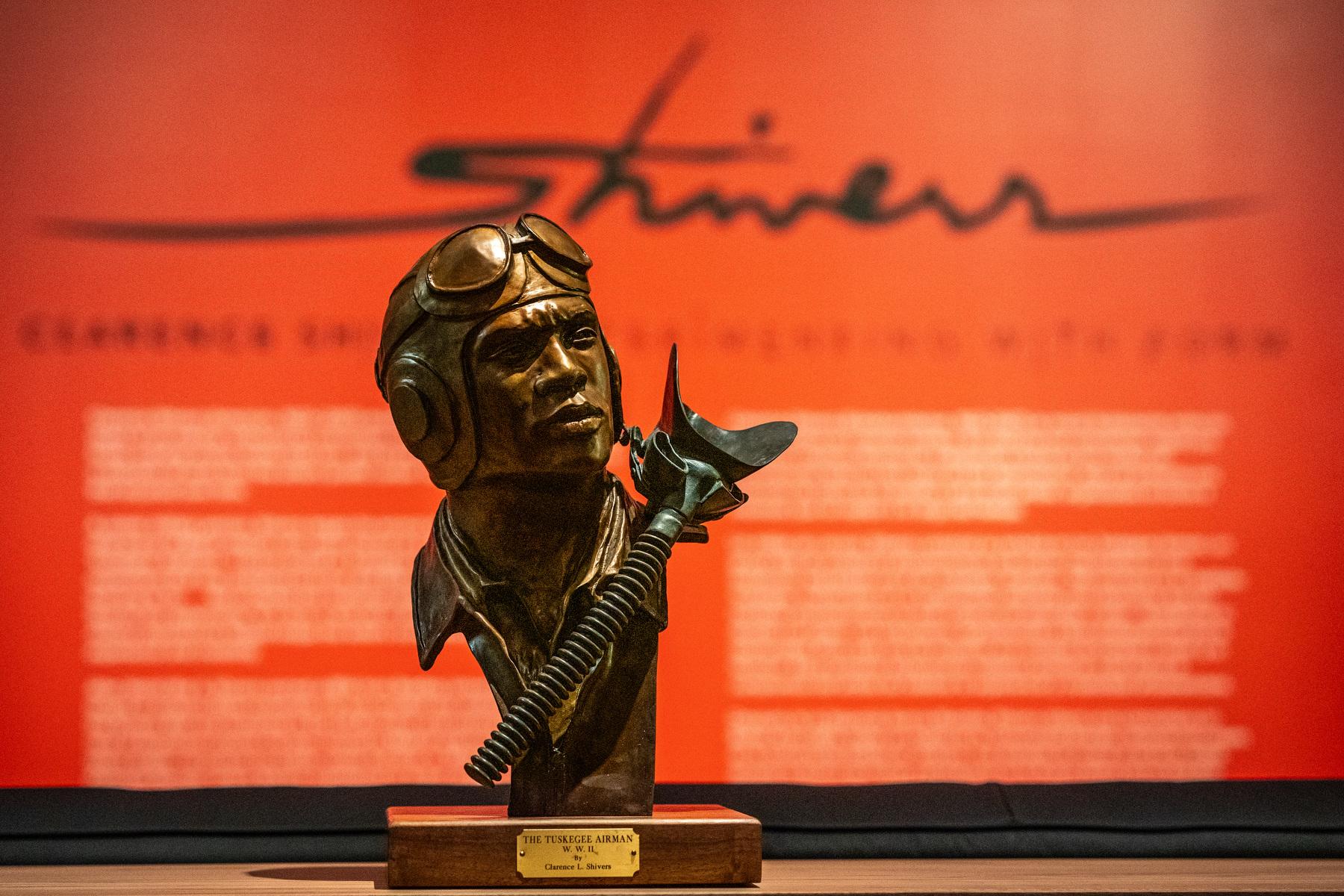
From the moment he sat in a pilot’s seat, his widow said, Clarence Shivers felt at home.
As a young man in World War II, Shivers signed on as a Tuskegee airman – one of the nation’s first Black military pilots. But the beginnings of his art career dated all the way back to his childhood, under the tutelage of his big sister, according to his widow, Peggy Shivers. While his military pals went out for beers, she said, Shivers often worked away in his studio.
“Clarence was always an artist,” she said.
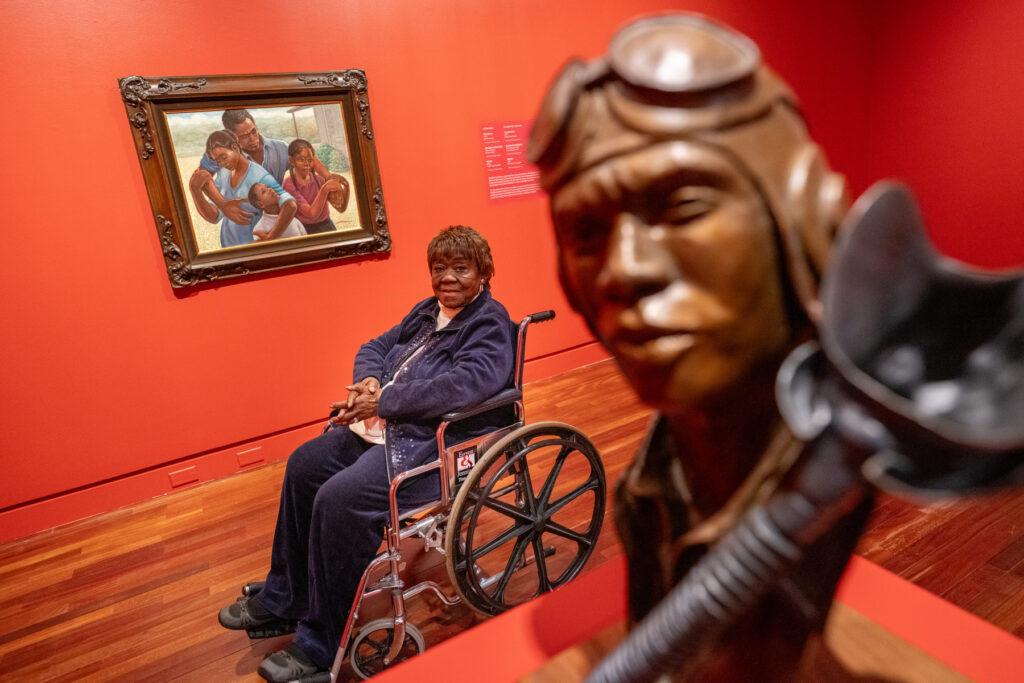
Some of the highlights of that lifetime of work are now on display at the Colorado Springs Fine Arts Center in an exhibit entitled “Clarence Shivers: Experimenting With Form.”
The show’s curator, Michael Christiano, said the featured works demonstrate Shivers’ versatility, from sculpture to abstract painting, from tender family scenes to portraits of civil rights icons.
“One of the things that made Clarence so compelling and I think also challenging, is his ability to move so fluidly between media subjects and styles,” Christiano told Colorado Matters host Ryan Warner during a recent tour. “I think that is just a really important model for us to consider as a mode of creative output.”
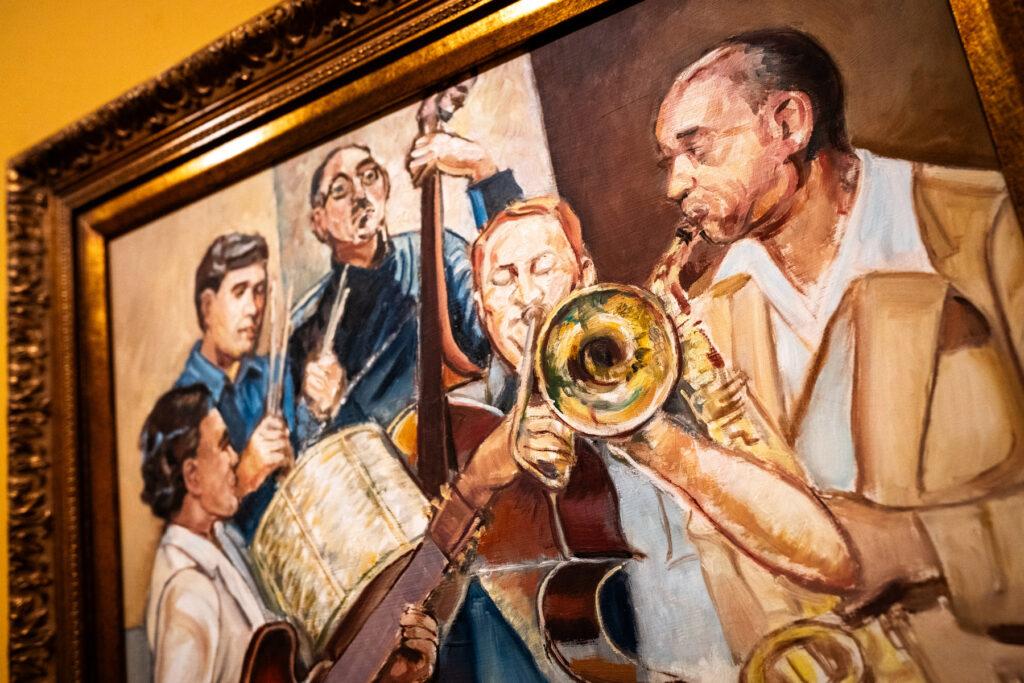
Shivers enlisted in the military late in World War II, served in Korea, and retired in 1969 as a lieutenant colonel. After Shivers left the service, he and Peggy spent 10 years in Spain, where he focused on abstract art, including a painting called “Prismed Guardia,” dominated by two shadowy figures from dictator Francisco Franco’s enforcers, the Guardia Civil.
Peggy said her husband made paintings of the Guardia to sell to fellow Americans who wanted to take home something more than the traditional souvenirs of Spain. It was illegal at the time to depict Guardia members but a military official who found out about it never did anything, she said.
After Spain, the couple settled in Colorado Springs, where Shivers was commissioned for a life-sized sculpture honoring the Tuskegee airmen for the U.S. Air Force Academy. The problem was, Christiano said, Shivers had never sculpted before.
“He went to the local art supply shop and essentially asked ‘So I have to make a sculpture, where do I start?” Christiano said.
The plaque on the resulting statue reads “They rose from adversity through competence, courage, commitment, and capacity to serve America on silver wings and to set a standard few will transcend.”
It is one of Shivers’ best-known works.
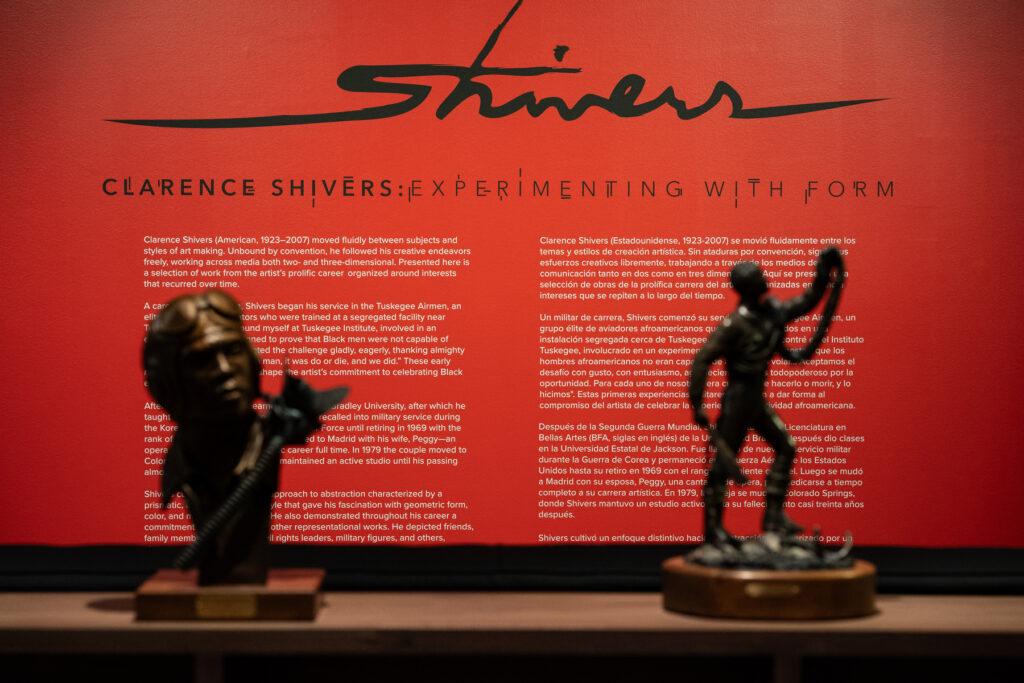
And there was another important commission, Peggy said, this one from the Miller Brewing Company in the early 1980s, for a calendar featuring civil rights icons.
Monthly pages from the calendar, with portraits of activists ranging from Martin Luther King Jr. to Medgar Evers and Fannie Lou Hamer line a room in the exhibit. Peggy Shivers arranged interviews with the subject of each painting, or with family members of those who had died. Shivers wrote the description that accompanied each picture.
“This was actually one of the most wonderful things to happen to us in our lifetimes,” Peggy said.
Shivers died in Colorado Springs in 2007. The exhibit runs through July 6 at the Fine Arts Center, 30 W. Dale St., in Colorado Springs.
Editor’s Note: The Fine Arts Center is part of Colorado College which holds the license for KRCC.



